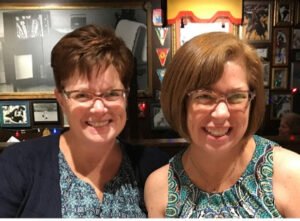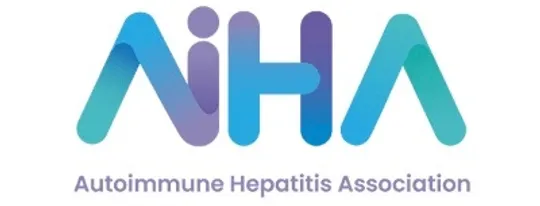By Erin Anderson
AIHA Director of Programs and Advancement
If having autoimmune disease were a competition, Lee Gipson (below left) jokes that she would take home the prize over her older sister, Jo McCoy (below right). Gipson has three autoimmune diseases, and McCoy only has one. But together, the pair might win a competition for being extra rare because they both have autoimmune hepatitis (AIH).
 Autoimmune diseases typically run in families, so it’s no surprise that both sisters have them. What is highly unusual is that they both have AIH. AIH occurring in two first-degree relatives is rare; a study from Denmark recently showed that among 8,582 first-degree relatives, only six developed AIH. The risk of a
Autoimmune diseases typically run in families, so it’s no surprise that both sisters have them. What is highly unusual is that they both have AIH. AIH occurring in two first-degree relatives is rare; a study from Denmark recently showed that among 8,582 first-degree relatives, only six developed AIH. The risk of a
first-degree relative having AIH was 0.1%
over 10 years of follow up.
“I feel sad that my sister also has the disease, but I’m glad we have each other,” McCoy says.
The first diagnosis
McCoy, who lives in South Bend, Indiana, was diagnosed in January 2019. She feels fortunate because she was diagnosed fairly quickly.
When Gipson, who lives in Indianapolis, learned about McCoy’s diagnosis, she began doing some research about the disease, found the Autoimmune Hepatitis Association (AIHA), and learned about our 2019 patient conference. The pair decided to attend. Little did Gipson know that attending the conference would eventually lead to her own diagnosis.
The AIHA offered free FibroScans, which are noninvasive liver tests, at the conference, and the organization encouraged both AIH patients and healthy attendees to sign up.
Both agreed to get a FibroScan, and one of Gipson’s numbers was high. She brushed it off thinking she needed to lose weight. Then she started having symptoms.
Following in her sister’s footsteps
Fast forward six weeks, and Gipson started to feel crummy. Her symptoms started mimicking some of her sister’s, and she grew a little suspicious that she could also have AIH. She had previously been diagnosed with rheumatoid arthritis and Sjogren’s syndrome, both of which are autoimmune diseases.
Gipson saw her general practitioner, had a liver biopsy, and then just happened to be referred to Raj Vuppalanchi, M.D., the same doctor who gave a talk about FibroScans at the AIHA conference at Indiana University.
“I showed him my FibroScan report from the conference, and he said ‘these numbers are concerning.’” Gipson explains. “I said, ‘I know, I have to lose some weight.’ He said, ‘No, it’s not about your weight. If you had showed me this at the conference, I would have brought you in for further evaluation.’”
Sure enough, Gipson was also diagnosed with AIH. “It was just a coincidence that I went with Jo to the conference,” Gipson says. “After that, I may have accused her of giving it to me and mentioned that I was very unappreciative,” she jokes. “But looking at the science, we know that didn’t happen.”
Same disease, different experiences
While Gipson and McCoy both have AIH, their experiences with the disease have been vastly different. McCoy typically has more symptoms from the disease and side effects from the medication than her sister and has had more ups and downs with her liver blood tests. Through it all, they both say that knowledge is key, and they’re grateful to have each other.
Gipson encourages other patients to manage their disease but not to let it overtake their lives. “Arm yourself with data, understand your disease, and get your arms around it,” Gipson says. “You own it; your doctor doesn’t own it. It’s one more thing to manage, but it’s not your entire life.”
McCoy adds, “After being diagnosed, I was angry; I was sad; I was scared; and I allowed myself to grieve a bit. After wallowing a week or two, I began to feel better and got back to living my best life. Like Lee said, I refuse to let AIH define me.”
